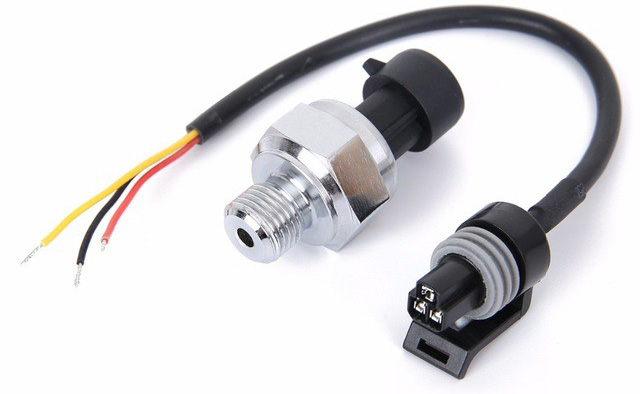Pressure sensors are an important addition to any toolbox, enabling you to ensure that your work is as safe and high quality as possible.
Choosing the right pressure sensor can help you with a range of tasks and responsibilities. A good pressure sensor allows you to measure pressure and force accurately across all projects. This enables you to adhere closely to safety standards and avoid equipment damage.
Here’s everything you need to know about pressure sensors, along with some examples.
What is a pressure sensor?
A pressure sensor is a small device designed to measure units of force applied by liquid or gas on a surface.
Pressure sensors rely on a pressure-sensitive element to determine applied pressure, commonly measured in Pascal (Pa), Bar (bar), N/mmm2, or psi (pounds per square inch).
Different types of pressure sensors may work slightly differently, but all pressure sensors are similar in their purpose and functionality. Pressure sensors are highly accurate in determining applied force, helping to ensure safe and effective systems.
When pressure sensors are used
Pressure sensors have many applications and may need to be used in a range of tasks and circumstances.
In industrial environments, pressure sensors are often used to measure steam pressure in steam systems used for heating processes in manufacturing facilities. These pressure sensors monitor steam pressure and in some cases can be relied upon to control and regulate steam pressure.
Pressure sensors are also installed next to filters. Using pressure sensors for this purpose can help workers respond to clogs or flow disruptions, assisting with proper filter maintenance and care.
Frequently, pressure sensors are used for level measurement purposes. High-pressure sensors can measure liquid pressure at the bottom of an open tank, while low-pressure sensors can measure air pressure at the top. These sensors can work together to determine cumulative pressure and show the tank’s liquid volume.
Examples of pressure sensors
There are a few main types of pressure sensors that may be useful for you.
Aneroid barometer pressure sensors are composed of a hollow metal casing with flexible top and bottom surfaces. These sensors measure barometric pressure as atmospheric pressure causes changes to surface shape. Aneroid barometer sensors are small, durable, and diverse in application. They are popular for many professional purposes, but mass limitations can cause time disruptions that make these devices ill-suited to dynamic projects.
Manometer pressure sensors are fluid pressure sensors, using simple design and structure to achieve high accuracy in measurements. Typically, these sensors are used to measure liquid in tanks by displacing liquid and calculating pressure changes. These sensors are very precise, making them an excellent choice for many purposes. However, they usually have limited range and can have a slow response rate.
Sealed pressure sensors are used to determine pressure measurements relevant to a reference value in environments where it is not possible to expose the sensor directly to the reference pressure. These sensors rely on existing data to produce accurate new measurements. They are frequently used to measure pressure on submersible vehicles and for other similar purposes. These sensors are designed to serve a specific function, so it’s important to consider whether they align with your measurement needs.
Other types of pressure sensors include vacuum sensors and bourdon tube sensors.
Looking for a high-quality pressure sensor to help you on your next job? Visit the RS Online store to shop the range!

